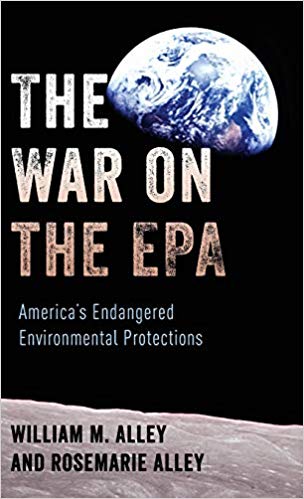
In a new book “The War on the EPA: America’s Endangered Environmental Protections”, authors William and Rosemarie Alley examine the daunting hurdles facing the U.S. Environmental Protection Agency in its critical roles in drinking water, air and water pollution, climate change, and toxic chemicals.
One challenge detailed in the book is the lack of action taken in communities to protecting the sources of their drinking water, notably groundwater.
The efforts of Marion County were highlighted as one of the communities committed to protecting groundwater.
Most of Marion County’s productive aquifers are shallow, making them highly vulnerable to contamination. As on old industrial city, Indianapolis has a long history of contaminating its groundwater. The White River runs right through the city and is also polluted. So city leaders decided to get serious….The wellhead protection areas for each of Marion County’s seven public were mapped..about a thousand commercial industrial sites have been identified as potential contaminant sources due to their business practices…[now] any company seeking a building permit within a wellhead protection program has to undergo review with a technically qualified person to ensure the groundwater will be protected…. In 2017, the health department enacted a mandatory enforceable Wellfield Health Code.
In addition to highlighting the regulatory efforts, the authors note many of the positive outcomes of the business education portion of the Marion County Wellfield Education Corporation. Haley Waldkoetter and Rachel Walker, environmental consultants for MCWEC described their efforts visiting businesses and working together with the local health department to protect the water supply:
“The amazing thing,” Waldkoetter says, “is that when we’d go back months, or even years later, these things [free secondary containment equipment and spill clean-up kits given away to businesses] were still being used. Nobody had any idea what it was there for, but they were using it”…. Walker sits down with the business owner and works out a manageable step-by-step process. She has the contacts and solutions at her fingertips, such as who to call to have old oil removed, or where to go for other problems. If Walker sees meaningful progress during her return visit, she lets the health department know that [the business] is making a good-faith effort. There’s a lot of flexibility, because everyone knows these things take time. After all, they’re not out to bust people. “Our job is to protect the county’s water supply,” she emphasizes.
The book also covers toxic “forever chemicals” known as PFAS, pervasive agricultural pollution, dead zones in the Gulf of Mexico, and widespread air and water pollution from use of fossil fuels. Delving into the science, politics, and human dimension of these and other problems
Critics of the book note it as a must-read for scientists, adovcates, policymakers, and citizens.
The War on the EPA: America’s Endangered Environmental Protections can be purchased at Amazon, or log in to your library account and request purchase for the system!
